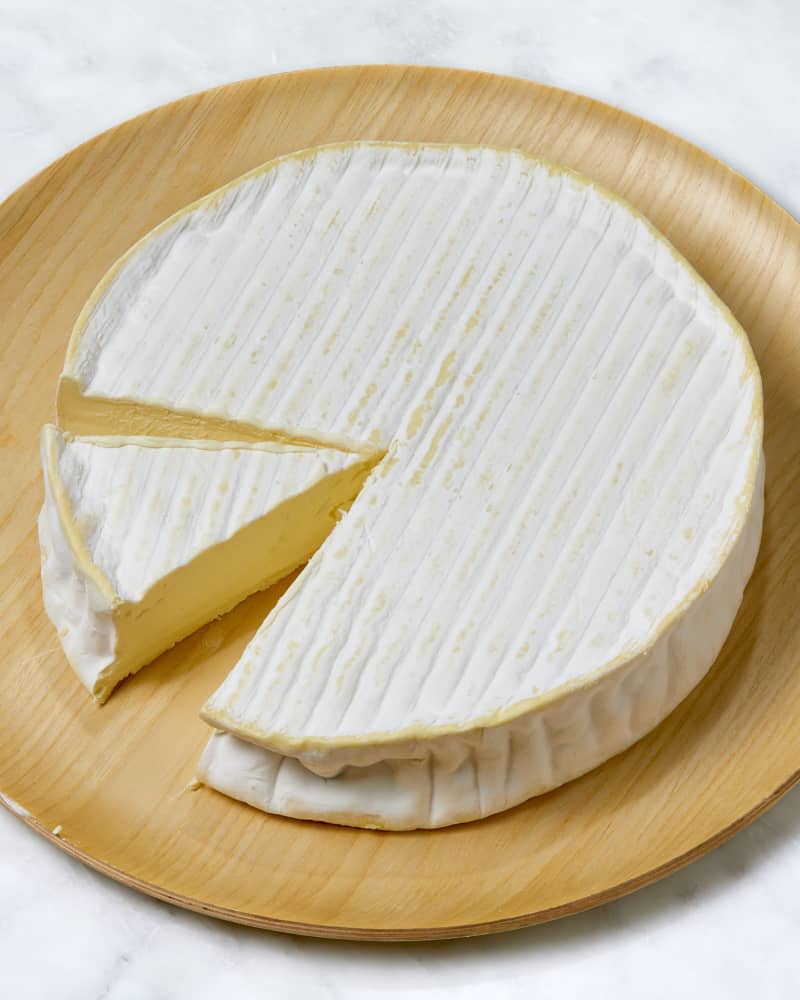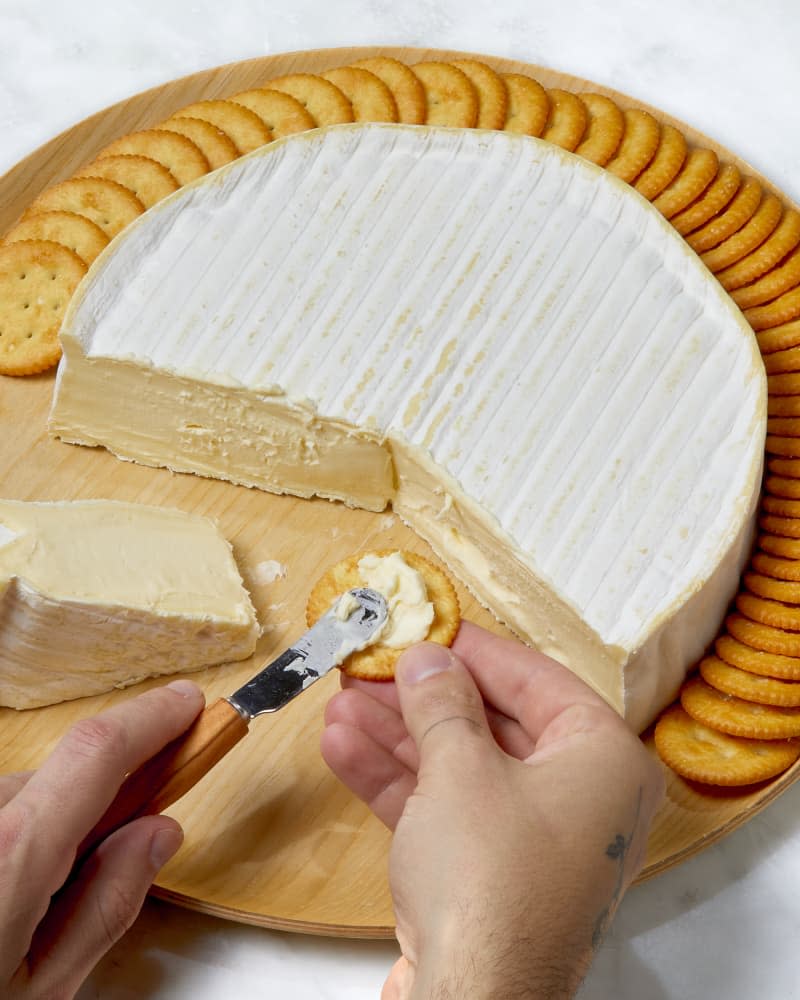The Correct Way to Slice Brie

Whenever I head home for Christmas, there’s one dish that my mom always looks forward to me making. Well, maybe more than just one dish, but there’s one particular appetizer that’s always an annual favorite. The dish in question is a perfectly baked wheel of Brie cheese topped with chopped nuts and fruit preserves. Yes, it’s rather simple, but it just wouldn’t be the holidays without it!
While my family always makes sure to prepare all of the usual Cuban fixings for Christmas — mojo roast pork, white rice, flan, plantains, and yuca — I’ve always loved Brie cheese for the holidays, especially when it’s served on a board with salty cured meats or warm with fun toppings.
What Is Brie Cheese and How Is It Made?
Brie cheese is easily one of the most well-known cheeses in the world, and without a doubt the most beloved and recognized cheese from France. Brie cheese, which originates from the Brie region of northern France, is traditionally a cow’s milk cheese (although Brie made from goat’s milk is also common) that is soft-ripened.
Brie cheese is produced from this method and has a very creamy soft interior, which is softer closer to the center and more firm around the sides. Brie cheese has a flavor that is earthy, slightly salty, a little bitter, and somewhat mushroom-like.

How to Cut and Serve Brie Cheese, According to a Cheese Expert
While there are many different ways to serve a high-quality wheel of Brie cheese, most experts would agree that brie is most flavorful at a very mild temperature. “You definitely want to serve it at room temperature to enjoy all its aromas and creamy texture,” says Charles Duque, managing director at The French Dairy Board. “We suggest removing It from the refrigerator 30 to 40 minutes before serving.”
Duque also says that Brie cheese is good eaten warm, and its texture is pleasantly different. “Warm, melty Brie is unctuous, creamy, and runny,” says Duque. “Adding thyme or honey can create a great dipping recipe with crackers or thinly sliced baguette.” Duque does not recommend eating Brie straight from the refrigerator, as the coldness detracts from the natural flavor of the cheese.
Duque explains that because most people will either buy a small wheel of Brie cheese or a wedge of Brie cut from a large wheel, it’s good to cut into just the right amount of pieces and in the right direction. A larger wedge, for example, can be cut into seven pieces — each one with the same amount of rind and paste.
Be sure to cut the wedge into thin slices starting from the point and then slicing straight down toward the outer edge to create very thin, rectangular slices. “The idea is to serve all slices with equal amounts of rind and paste to give everyone the same in-mouth experience,” says Duque. “The rind brings flavor and texture to every mouthful.”
How to Eat Brie Cheese
Serve it on a charcuterie board: Brie cheese can be served and eaten in a variety of ways. In the States, Brie cheese is commonly eaten along with other types of snacking cheeses and cured meats like salami or prosciutto, as part of a cheese plate or charcuterie board. Slice a small wheel or wedge of Brie cheese into smaller wedges from the center to the edge as opposed to cutting a wedge directly from the center into more square-like pieces. This way every slice has a more complex flavor, as it’ll include both the center and the outermost part of the Brie.
Add it to a sandwich: If you like eating Brie cheese at room temperature, but want to go beyond the usual charcuterie board, you should definitely add a few slices of it to a room-temperature sandwich. You can add Brie to a typical turkey sandwich with lettuce and tomatoes or even go with more of a French spin and add it to a baguette with ham and salted butter.
Bake it in the oven with toppings: In the States, it is also very common to serve a wheel of Brie cheese with the top layer of rind sliced off and topped with different fruit preserves, herbs, or honey. The wheel is then baked in the oven briefly so it’s melty and easy to spread. Additionally, you can even go the extra mile and wrap a wheel of Brie in puff pastry and serve it with fresh fruit.
Put it on a cheeseburger: If you really want to give your Brie cheese a more American experience, you can layer a few slices of it on top of a burger, in place of the usual American or cheddar cheeses. While Brie is best at room temperature, it’s still good while warm and melty paired with meat — especially if you have something salty like bacon on it as well.
Brie, like a lot of artisan cheese, is more complex than some people think. In fact, while Brie cheese is most commonly made with cow’s milk, goat’s milk Brie cheese is becoming increasingly popular, too.
You’ll also find other varieties of Brie cheese like triple cream Brie, which has cream added to it to make it extra rich and creamy in texture. Whichever type of Brie cheese you choose, however, just make sure you’re getting your money’s worth by serving it like an expert!

